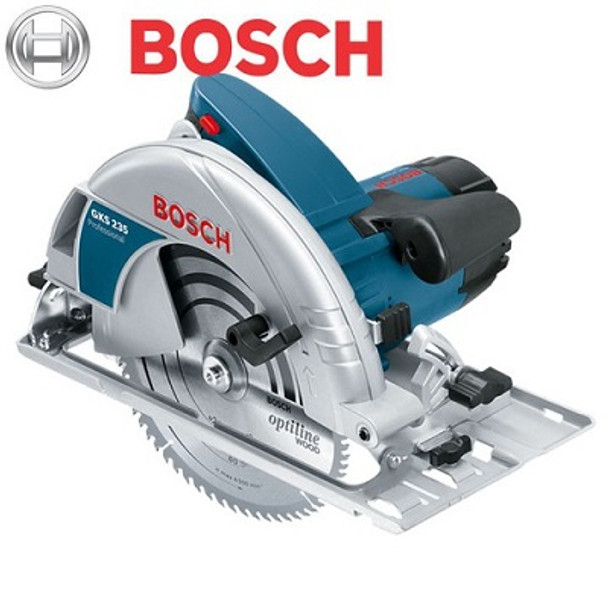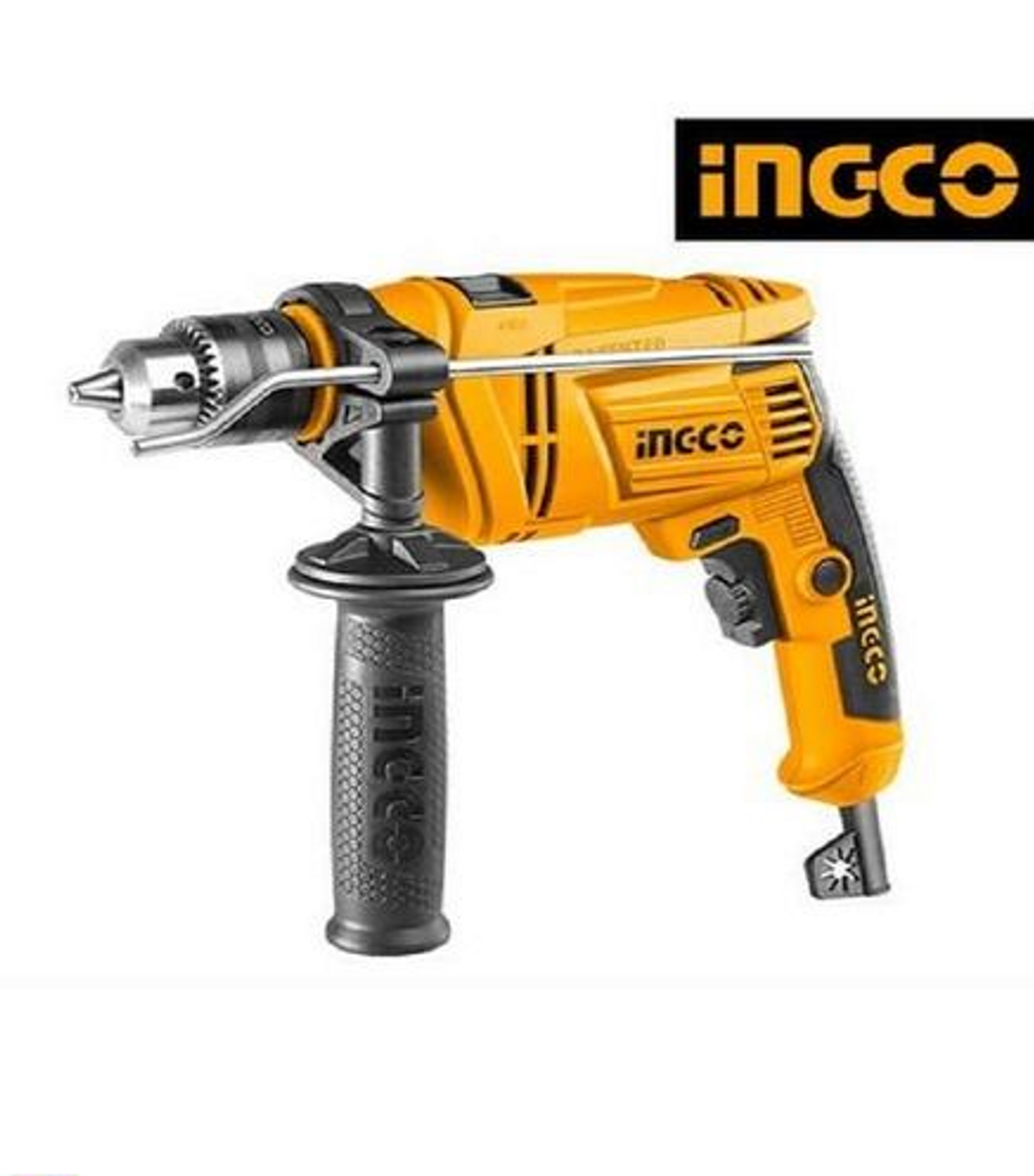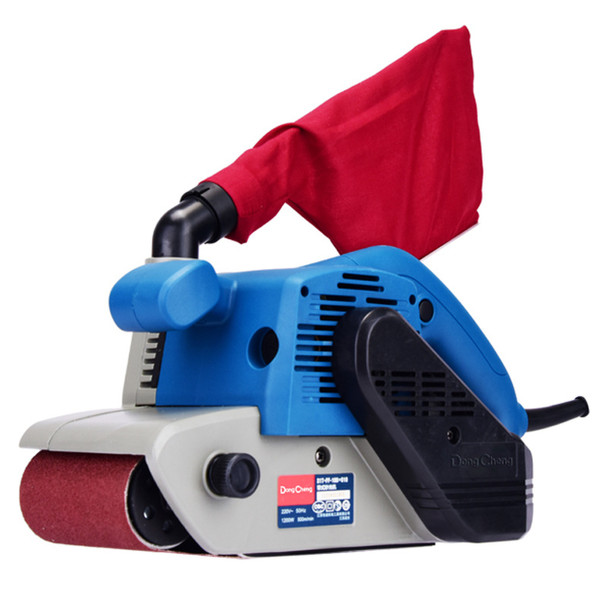Industrial Power Tools: A Comprehensive Guide for Heavy-Duty Tasks
Industrial power tools play a crucial role in heavy-duty tasks across various industries. These tools are designed to handle demanding applications, providing the power, performance, and durability necessary to tackle tough jobs. Whether it's construction, manufacturing, metalworking, or any other field that involves heavy-duty tasks, having the right industrial power tools is essential for efficiency, productivity, and safety.
Industrial power tools are specifically engineered to handle the rigors of demanding work environments. They are built to withstand continuous use, heavy loads, and challenging materials. These tools are known for their robust construction, high-performance motors, and advanced features, making them reliable workhorses in industrial settings. Examples of industrial power tools include Power saws, Power grinders, Power sanders etc.
The DongCheng Angle Grinder DSM125A a handheld industrial power tool that can be used for a variety of metal fabrication jobs that include cutting, grinding, deburring, finishing and polishing. This angle grinder is a low-cost device that is powered by electricity; either corded or battery powered. This DongCheng Angle Grinder DSM125A is designed with electronic constant speed control, a large trigger switch and also has auto stop carbon brush.
This comprehensive guide aims to provide you with a detailed understanding of industrial power tools and their applications in heavy-duty tasks. Whether you're a professional in the industry or an aspiring DIY enthusiast, this guide will help you navigate the world of industrial power tools effectively. We will explore various types of industrial power tools, including power drills, power saws, power grinders, power sanders, power nailers and staplers, and power rotary tools. Each section will delve into the features, applications, and best practices for using these tools in heavy-duty tasks.
Additionally, we will discuss the essential factors to consider when selecting industrial power tools, such as power and performance, durability and reliability, safety features, and ergonomics. Understanding these considerations will empower you to make informed decisions and choose the right tools for your specific needs. Furthermore, we will provide valuable insights on safety guidelines for working with industrial power tools. Safety is paramount when dealing with heavy-duty tasks, and we will cover topics such as personal protective equipment (PPE), proper tool handling and maintenance, electrical safety precautions, and avoiding common hazards and accidents.
By the end of this comprehensive guide, you will have a solid understanding of industrial power tools and how they can enhance your performance in heavy-duty tasks. You will be equipped with the knowledge to select the right tools, apply them effectively, and prioritize safety in your work environment. So, let's dive in and explore the world of industrial power tools together!
Understanding Industrial Power Tools
Industrial power tools, as the name suggests, are professional-grade tools designed to handle heavy-duty applications in industrial settings. These tools are typically electric-powered or pneumatic, and their construction and components are engineered to withstand continuous and demanding use.
The defining characteristics of industrial power tools include:
- Robust Construction: Industrial power tools are built with durable materials, such as high-grade metals and reinforced plastics, to withstand the wear and tear of industrial environments.
- High-Performance Motors: These tools are equipped with powerful motors that deliver higher torque and RPM (revolutions per minute) compared to consumer-grade tools, enabling them to handle tougher materials and tasks.
- Advanced Features: Industrial power tools often come with advanced features and technology, such as variable speed controls, electronic feedback systems, and overload protection, to enhance performance and user safety.
- Ergonomics: To reduce operator fatigue and increase comfort during prolonged use, industrial power tools are designed with ergonomic handles and controls.
- Versatility: Industrial power tools are engineered to be versatile, allowing them to perform a wide range of tasks with the use of interchangeable accessories and attachments.
Key considerations when choosing industrial power tools
When selecting industrial power tools for heavy-duty tasks, several key considerations come into play to ensure that you choose the right tool for the job:
- Power and Performance: Assess the power rating and performance capabilities of the tool, such as RPM, torque, and impact force, to ensure it meets the demands of your specific tasks.
- Durability and Reliability: Look for tools made from high-quality materials and reputable brands known for their durability and reliability in industrial settings.
- Safety Features: Check for safety features like electronic brakes, anti-kickback mechanisms, and trigger locks to enhance user safety during operation.
- Ergonomics and User Comfort: Consider the tool's design and ergonomics to ensure comfortable handling and reduced operator fatigue during extended use.
Common Types of Industrial Power Tools
A. Power Drills
- Features and Applications: Power drills are versatile tools used for creating holes in various materials, such as wood, metal, plastic, and masonry. They come with different attachments, including drill bits, hole saws, and augers, for diverse drilling applications.
- Types of Power Drills:
Industrial power drills are available in various types, including:
a. Corded Power Drills: Connected to a power outlet, these drills offer consistent and uninterrupted power, making them suitable for continuous use.
b. Cordless Power Drills: Powered by rechargeable batteries, cordless drills offer portability and flexibility, ideal for tasks where mobility is crucial.
c. Hammer Drills: Hammer drills combine rotary drilling with a back-and-forth hammering action, allowing for efficient drilling in masonry and concrete.
- Best Practices for Using Power Drills in Heavy-Duty Tasks:
- Select the appropriate drill bit for the material and the size of the hole needed.
- Use a steady and consistent pressure when drilling to avoid overheating the tool.
- Apply lubrication when drilling into metal or tough materials to prolong the life of the drill bit.
Impact drill ID6808 Ingco
B. Power Saws
- Features and Applications: Power saws are indispensable tools for cutting through various materials with precision and speed. They are used in construction, woodworking, metalworking, and more.
- Types of Power Saws:
Industrial power saws come in several types, including:
a. Circular Saws: Circular saws are versatile tools for making straight cuts in wood, metal, and plastic.
b. Reciprocating Saws: Also known as "sawzalls," these saws are ideal for demolition work and cutting through thick materials.
c. Band Saws: Band saws are commonly used for cutting curves and intricate designs in wood and metal.
- Safety Tips for Using Power Saws Effectively and Safely:
- Always wear appropriate PPE, such as safety goggles and hearing protection, when using power saws.
- Secure the workpiece firmly to prevent movement during cutting.
- Follow the manufacturer's guidelines for blade installation and ensure the blade is sharp and in good condition.

Bosch GKS 235 Turbo Professional Circular Saw
C. Power Grinders
- Features and Applications: Power grinders are versatile tools used for grinding, cutting, and polishing various materials, including metal, concrete, and stone.
- Types of Power Grinders:
Industrial power grinders include:
a. Angle Grinders: Angle grinders are compact and powerful tools for cutting and grinding metal, tile, and concrete surfaces.
b. Bench Grinders: Bench grinders are stationary tools mounted on a workbench, mainly used for sharpening tools and removing rust and burrs.
- Grinding Techniques and Safety Precautions:
- Use the appropriate grinding disc for the material being worked on.
- Maintain a firm grip on the grinder and avoid applying excessive pressure.
- Wear a dust mask or respirator to protect against airborne particles during grinding.
DongCheng Angle Grinder DSM125A
D. Power Sanders
- Features and Applications: Power sanders are essential for achieving smooth and uniform surfaces on various materials, including wood, metal, and plastic.
- Types of Power Sanders:
Industrial power sanders come in several types, including:
a. Belt Sanders: Belt sanders use continuous belts for rapid material removal on large surfaces.
b. Orbital Sanders: Orbital sanders use a circular sanding motion for fine finishing and uniform sanding.
- Proper Sanding Techniques and Tips:
- Start with a coarse-grit sandpaper and progress to finer grits for a smoother finish.
- Always sand in the direction of the grain for wood surfaces to avoid scratches.
DongCheng Belt Sander DST610
E. Power Nailers and Staplers
- Features and Applications: Power nailers and staplers are time-saving tools used for fastening materials like wood, metal, and plastic.
- Types of Power Nailers and Staplers:
Industrial power nailers and staplers include:
a. Brad Nailers: Brad nailers use thin nails, leaving minimal visible holes, making them ideal for delicate trim work.
b. Finish Nailers: Finish nailers are suitable for heavier trim work and fastening larger pieces of wood together.
- Best Practices for Fastening Tasks:
- Choose the appropriate nail or staple size based on the material and thickness of the workpiece.
- Adjust the depth setting on the nailer or stapler to control the depth of penetration.
Bosch GSK 64-34 pneumatic Angled Brad finish nailer
F. Power Rotary Tools
- Features and Applications: Power rotary tools are compact and versatile tools used for a wide range of tasks, including sanding, cutting, engraving, and polishing.
- Versatility of Power Rotary Tools: Power rotary tools are highly versatile due to their interchangeable accessories and attachments, making them ideal for intricate work.
- Creative Uses and Safety Considerations:
- Use rotary tools with engraving attachments for creating intricate designs on various materials.
- Wear appropriate safety goggles and ear protection when using rotary tools.
Ingco PDG4003 Die Grinder 400W
Selecting the Right Industrial Power Tools for Heavy-Duty Tasks
A. Assessing Project Requirements:
- Identify the specific tasks and materials involved in the project.
- Determine the required power and performance capabilities based on the project's complexity.
B. Evaluating Power Tool Specifications and Features:
- Compare the specifications and features of different industrial power tools to find the most suitable ones for the project.
C. Budget Considerations:
- Set a budget for acquiring the necessary power tools and prioritize quality and durability within the budget constraints.
D. Reviews and Recommendations:
- Seek reviews and recommendations from professionals and users who have experience with the selected power tools.
Safety Guidelines for Working with Industrial Power Tools
A. Personal Protective Equipment (PPE):
- Always wear appropriate PPE, such as safety goggles, ear protection, and gloves, when using industrial power tools.
B. Proper Tool Handling and Maintenance:
- Inspect the power tools before use to ensure they are in good working condition.
- Follow the manufacturer's guidelines for maintenance and cleaning to prolong the life of the tools.
C. Electrical Safety Precautions:
- Ensure that power tools are connected to a suitable power source with proper grounding.
- Avoid exposing power cords to potential damage or tripping hazards.
D. Avoiding Common Hazards and Accidents:
- Keep the work area well-lit and organized to prevent accidents and tripping hazards.
- Follow the proper techniques and safety precautions for each specific power tool.
Related Article;
DIY Toolbox: The Versatile Power Tools Every Enthusiast Needs
Kinds of power tools for construction
What Power Tools Do Electricians Use
Conclusion
Industrial power tools are essential components of heavy-duty tasks in various industries. Understanding their characteristics, applications, and safety considerations is crucial for achieving efficient and successful outcomes in industrial projects. By following the guidelines and best practices outlined in this comprehensive guide, professionals and enthusiasts alike can harness the power of industrial power tools to elevate their productivity and craftsmanship in heavy-duty tasks.
B. Final Tips for Choosing and Using Industrial Power Tools Effectively:
- Select industrial power tools that match the specific requirements of the project.
- Prioritize safety and ensure proper training for users working with industrial power tools.
Contact GZ Industrial supplies for the best Power tools in Nigeria
Recent Posts
-
The Ultimate Guide to Understanding the Difference Between Ethylene Glycol and Propylene Glycol
Introduction Glycols are versatile compounds widely used across various industries, from automotive …Apr 16, 2025 -
What are Agricultural Machinery
Introduction Agricultural Machinery is also used to improve the wide range of production prac …Apr 14, 2025 -
The Best Electrical Wire in Nigeria 2025 (Updated)
Introduction Electrical wires are the basic unit of every electrical system. Electrical wires …Apr 14, 2025









